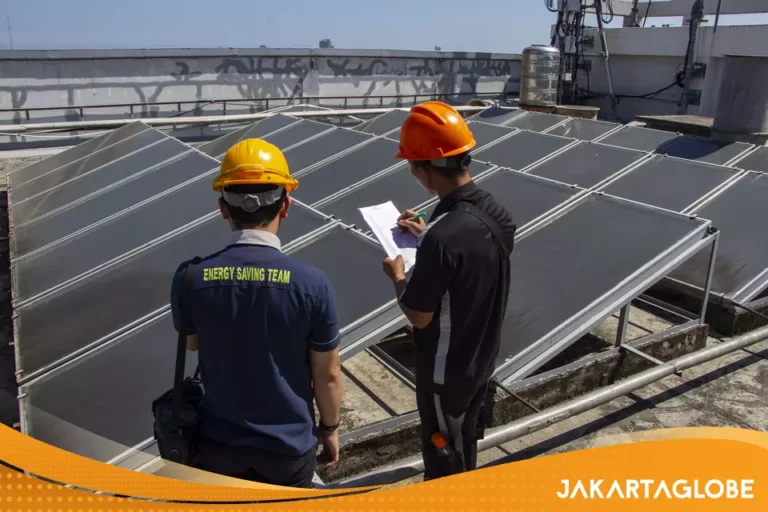With a solar power potential of up to 1,052 GW, Indonesia is sitting on a “solar gold mine” that can jump-start the clean-tech economy using this clean energy source.
So far, the bulk of the economy, particularly the industrial and power sector has been powered by fossil fuels. According to Ember’s data, Indonesia has 0.31 GW of solar power capacity, just shy of 0.03 percent of its total solar potential. Looking forward, the country plans to add up to 4.5 GW of solar capacity by 2030 in the PLN’s Electricity Business Plan (RUPTL) 2021-2030. However, this small addition will not significantly contribute to a low-carbon energy transition.
Noting the fact that the solar potential estimation assumes the entire land mass of Indonesia is covered with solar panels, and considering the archipelagic nature of Indonesia’s terrain, some argue that more mature technologies, such as geothermal and hydropower outweigh the benefits of solar energy. This emphasis is evident in the Just Energy Transition Partnership (JETP) plan, which prioritizes hydropower and geothermal energy over solar and wind as renewable solutions.
Deploying the entire 1,052 GW potential may not be possible due to technical challenges, but the vast potential shows solar power in Indonesia is a valuable asset that must be leveraged.
So, what will it take for Indonesia to transition from a fossil-fuel economy to a clean-tech economy fueled by clean energy sources?
Other countries are teeming with domestic policy and new investments in this field. Vietnam increased its solar capacity from 0.01 GW in 2016 to 18.5 GW in 2022 by introducing feed-in tariffs and relaxing requirements for solar project developers. India presented ambitious targets for solar over the next decade, targeting 185.6 GW of solar capacity by 2026-27.

Both countries managed to gradually untangle the carbon in, despite having a fossil-fuel-intensive system
For Indonesia to follow in the footsteps of its Asian peers above, it is recommended that the government address a set of issues that are inconsistent with the energy transition and climate change goals, namely: norms, institutions, technologies, and policies.
In terms of the norms, policies incentivizing the production and use of fossil fuels should be redirected to renewable sources like solar energy. Discourses that emerged in the last decade or so correlate renewable energy with poverty eradication. Not only could solar power address energy poverty in the urban space for marginalized communities, but it can also be used to solve rural electrification challenges using distributed energy systems.
Since the pandemic subsided, the central and local governments have been reeling from its effects and are pressured to regain economic growth. But instead of reducing costly fossil fuel subsidies, the government doubled down on subsidy packages ($6.8 billion in 2020), in addition to the allocation from the Covid-19 recovery package, in which direct support goes to fossil fuels rather than renewable energy.
Not long after, the Indonesian energy ministry stated that solar energy is increasingly cost-competitive compared to coal, in certain areas, as generation costs from solar farms are as much as 30 percent lower than coal power plants.
Another piece to the puzzle is having a supporting regulatory environment for the creation of a new market inducive for solar. This includes relaxing the local content requirement in the short term to help solar power finally take off. The present local content requirement entails using at least 40 percent of domestically sourced materials in solar projects, a commonly discussed barrier for foreign investors wishing to invest in Indonesia.
Obtaining land agreement for solar farms also depends upon the willingness of landowners to sell or lease. Government-arranged access to land, such as land lease payment exemption in Vietnam was found to be important in enabling the country’s rapid solar expansion, from 0.1 GW in 2016 to 18.48 GW in 2022. In the Vietnam case, a supportive investment environment, in the form of tax exemptions, has also paved the way for rapid solar uptake.
The potential untapped market to achieve Indonesia’s renewable energy goals also lies in rooftops. However, support for net metering is imperative so rooftop solar systems for homes, commercial buildings, or factories can help in reducing the electricity bill.
Indonesia has regulated the utilization of rooftop solar power plants and net metering under the Ministry of Energy and Mineral Resources Regulation No. 26/2021, which received mixed feedback from potential customers. Unfortunately, rather than specifying incentives for potential customers or addressing the lengthy process of applying to this scheme, the government will revoke net metering in the new revision that will soon be introduced.
This new revision will also revoke the installation capacity limits for potential customers that are subject to quota availability and remove capacity charges for industrial customers. These may encourage more industrial customers to install rooftop solar. However, given the readily available electricity from captive coal for industrial facilities, it remains to be seen whether the industries will choose to invest in rooftop solar.
This implies that the government needs to prioritize the development of supply chains for large-scale solar construction, provide additional incentives for project developers, and facilitate investment opportunities for both PLN and industries to capitalize on increased investment. This would position solar energy as a key driver for Indonesia’s clean-tech economy.
—
Dr Dinita Setyawati is a senior electricity policy analyst in South East Asia for Ember, an energy think tank that aims to accelerate the clean energy transition with data and policy. The opinions expressed in this article are her own.
Tags:
Keywords:

